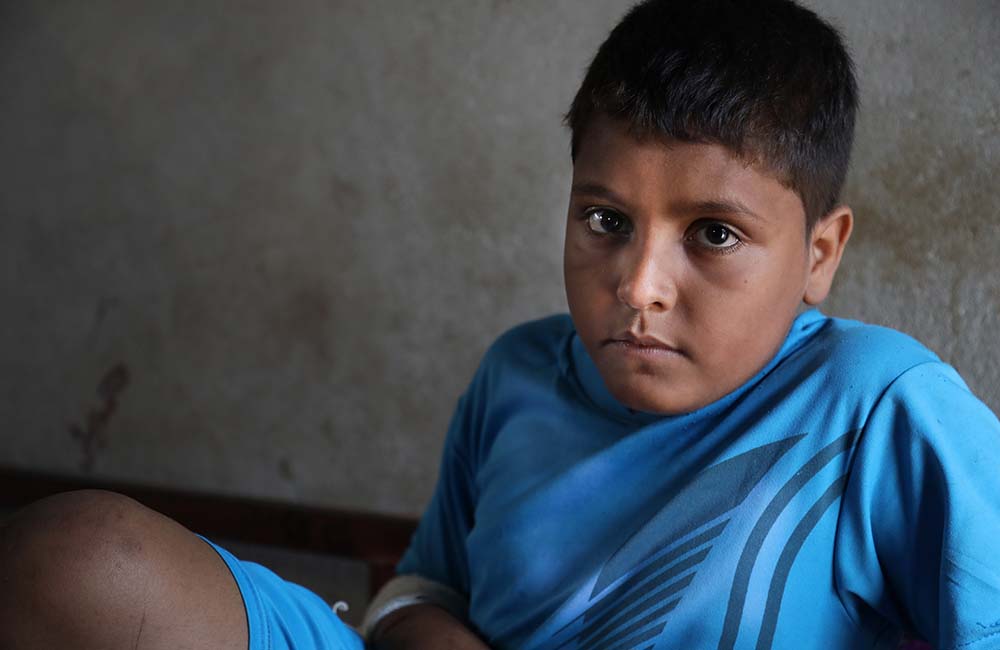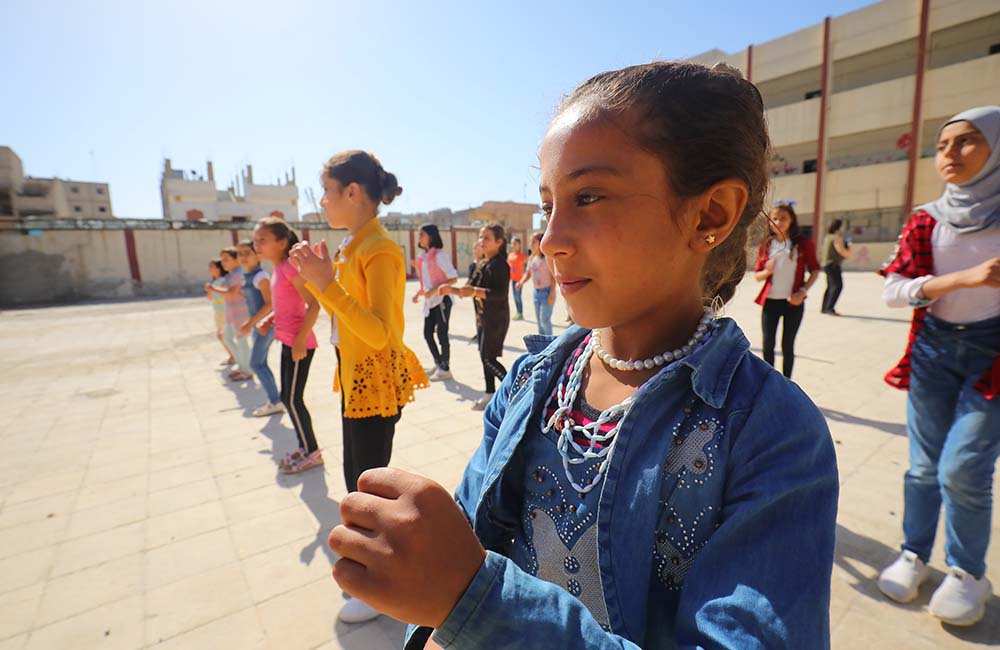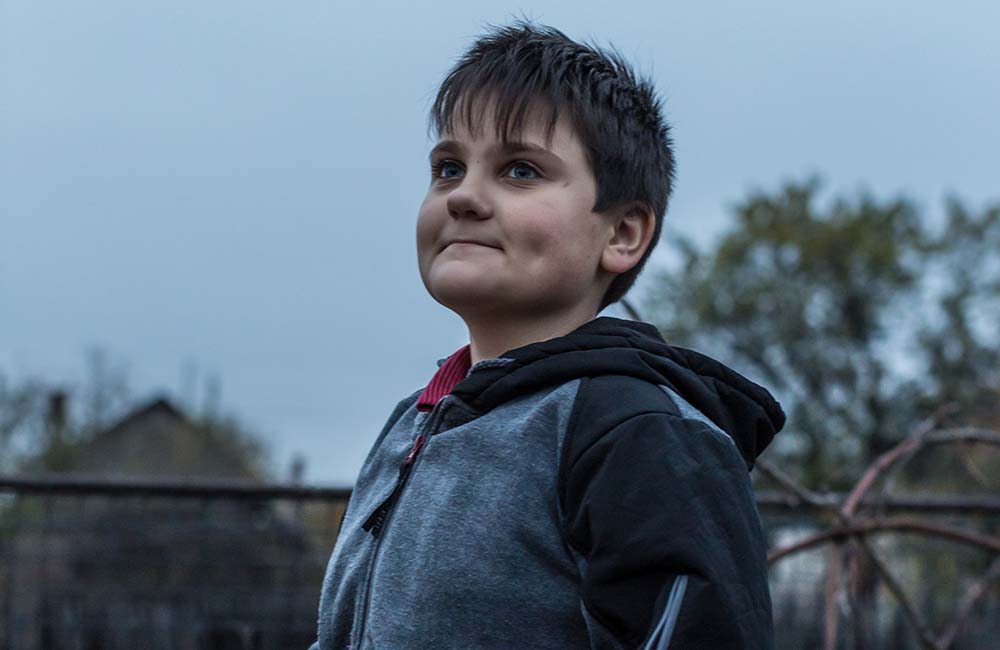Surviving is just the beginning
One night while Oleksander* and his family were sleeping in their village in Eastern Ukraine, their house was hit by artillery shells and the roof was blown off. Eight-year-old Oleksander continues to live with the psychological impacts caused by this event, and even the sound of thunder can trigger overwhelming emotions for him.
Surviving violence is just the beginning for children living in conflict.
When the danger has passed and you have reached the shores of safety, how do you move on with your life having lived through the unimaginable horrors of war?
This is the situation many children around the world are facing today. For those who have lived through conflict the real work is just beginning.
Mental health is a subject many of us will be very familiar with, but what may be less well understood is how it can show up in those who have lived with war on their doorsteps, especially children.
Children who have lived in conflict affected areas and who may even have experienced violence directly, can suffer mental health issues that manifest in a variety of ways. From night terrors, bed wetting, to anxiety and depression, the long-term effects can be devastating.
Through the assistance of our incredible community of donors, Save the Children provides children with support to help them work through the mental health difficulties that can last long after the dangers have receded. Psychosocial support helps children in a variety of ways including awareness sessions, recreational activities, sport, reading and more. Through these programs, children can begin to recover from the traumatic events that they have endured and allow themselves to be children again. Below are stories of children Save the Children is helping to develop tools to overcome these tough experiences and thrive.
Children on the road to recovery

Yousif recuperating at home in Hodeidah, Yemen.
Photo: Sami Jassar / Save the Children“I hope I can have my arm back as it was, so I can write and play again,” Yousif*.
13 year-old Yousif lives with his mother, father, and brother in Hodeidah, Yemen. After a normal morning playing football with friends, he had returned home to have breakfast with his mother when he heard loud shelling in the street outside. Yousif bravely ran down to the street to help his neighbours and was hit by the shrapnel of a shell that landed nearby.
Yousif ‘s leg, arm and foot were badly damaged, and he had to have multiple operations to remove the pieces of shell. He still cannot move his arm.
Save the Children covered treatment costs for Yousif, including the cost of the operations and medications. We also supplied food baskets, toys, mattresses, blankets, and pillows to the family. A psychosocial specialist is in regular contact with the family, and is helping Yousif with a school kit and other support to help him recover.
Yousif just wants his life and arm to be back to normal so he can play football like he used to.

Amira taking part in physical activities at school in Al Raqqa, Syria.
Photo: Muhannad Khaled / Save the Children
“When I see the destroyed buildings, I miss my father, my school, and my home,” Amira*.
9-year-old Amira lives with her mother Aida* and her 3 siblings in a Raqqa, Syria. The family were forced to escape their hometown of Aleppo when their house was bombed. Aida, who was pregnant at the time, remembers running from the house barefoot, the sounds of crying children everywhere. The family had no time to take anything with them as they ran for their lives.
Aida says that she is scared to let her children go out and play. Her children don’t seem like themselves and appear older than they are because of their experiences with conflict and being displaced.
Save the Children provided psychosocial support via our local partner for Amira who had been suffering depression. Her teacher, who has noticed the difference it has made, describes how she has turned from a sad child into one with a smile on her face who now engages in activities with her classmates.
When Amira grows up she wants to study and become a doctor. When she closes her eyes, she dreams of Aleppo and hopes her family will return there one day.

Oleksander outside his house in Eastern Ukraine.
Photo: Oksana Parafeniuk / Save the Children
“When I was still a kid, I slept in the same room as my brother, when an
artillery shell landed and some glass fragments got in my brother’s hand,” Oleksander.
Oleksander has lived under the constant threat of violence since he was 3 years old.
Growing up in a small village with his family in Eastern Ukraine close to the frontline, the 8-year-old has lived with his family under conflict since 2014.
Oleksander’s older brother Roma* was badly injured when shrapnel became embedded in his hand after an artillery shell landed on the house. Oleksander often wakes up in fear thinking the shelling has begun again and is sometimes triggered by the sound of thunder.
A Save the Children social worker is providing counselling for Oleksander to help him overcome the trauma of the incident.
Surviving is just the beginning for children living in conflict; they need the ongoing support of education, healthcare and essential services as well as supporting programs to help them cope with the psychological effects of war. With the support of our donors, we provide children and families with the assistance they need to begin healing after traumatic events and give children the hope they need to come through dark places.
*Names have been changed to protect identities.